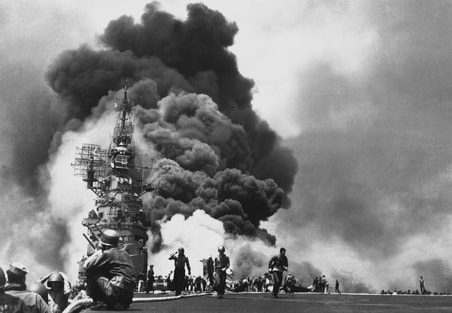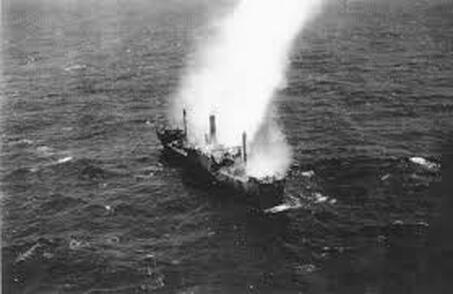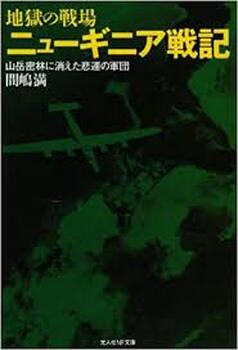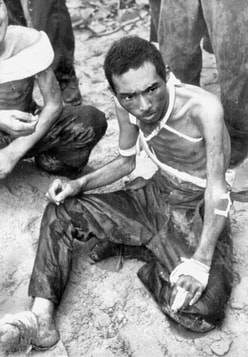 Source: tbs.co.jp
Source: tbs.co.jp The deaths of Kamikaze pilots – Excessive expectations versus reality
One of the more unique forms of death in battle that occurred during the desperate final stages of the Pacific War was, of course, those of the well-known Tokkõtai (‘special attack squad or group’). The Tokkõtai (the abbreviated version of Tokubetsu Kõgeki Tai) were primarily involved in attacks (‘special air attacks’) against ships, whereby aircraft loaded with explosives would crash into the said ships. There were other forms of such attacks, such as the so-called ‘Unyõ’, which involved crashing a motor boat known as a ‘Marule’ into the side of ships (‘special above-water attacks’), and attacks by single-seat, modified torpedos known as ‘Kaiten’ (‘special under-water attacks’). However it was the attacks carried out by aircraft that led to the greatest number of casualties for Japan, and so it is upon these that I will focus my attention. (52)
The Tokkõtai made its first appearance in October 1944 as part of the defence plan for The Philippines. Its formal name was the Shinpû Tokubetsu Kõgeki Tai (although the reading of the characters for Shinpû was later modified to the more common Kamikaze). The original purpose of the Tokkõtai was to provide support to the fleet of Admiral Kurita in its attempt to break through to Leyte Gulf. Pilots would crash their aircraft into the flight decks of the US Navy’s main aircraft carriers, thereby rendering the carriers temporarily inoperable. They were not attempting to actually sink the carriers, and so their initial mission was limited in its scope. However as the war progressed, the role of the Tokkõtai escalated. By the start of the Okinawan campaign towards the end of March 1945, the Tokkõtai had become both the army and navy’s principle strategy for resisting the US. Yet this meant that the expectations placed upon the Tokkõtai began to grow ever more excessive. (52)
For example, on the 26th of January 1945, Admiral Oikawa Koshirõ, Chief of the Naval Staff, wrote in relation to the distribution of 250 ‘Õka’ (‘cherry blossom’) flying bombs:
“At present, there are a variety of opinions regarding the state of the war, and while I recognize that the situation is grave, I do not regard it as critical. A large number (250) of special weapons (human piloted Õka bombs) have been gathered together, and right now we have large numbers of recruits undergoing training at Kanoya (base). (Abridged) We had planned to deploy these pilots to Hitõjima (The Philippines’ front) by November of last year, but were not able to make it in time. However if these pilots can be used in the next (engagement), our military will reverse the situation, and we will be able to recapture territory extending as far as the Marianas”. (source: Takagi Sõkichi, Diary and Papers, Vol.2). (52, 53)
One of the former colleagues of Chief of Navy Admiral Oikawa, Admiral Okada Keisuke, had plenty of experience listening to Admiral Oikawa’s conversations, and had the following blunt remarks to say about Admiral Oikawa’s plan:
“I have to say, the idea of manufacturing 200 odd such weapons a month and then using them to retake territory from Hitõjima to Saipan was something a little akin to a dream.” (source: cited above).
In truth, the expectations placed on the ‘Õka’ were no more than a dream. The ‘Õka’ was a small, glider type aircraft packed with advanced rocketry and explosives and steered by a single human pilot. Although many resources refer to it as a ‘rocket’, it was not officially regarded as one. It would be suspended underneath a conventional ‘mother’ Mitsubishi G4M (‘Betty’) bomber aircraft and taken up into the air. Upon approaching an enemy ship, it would be released from the mother aircraft. The Õka pilot, locked into his cockpit, would then steer the aircraft using the air current. Just before making contact with the enemy ship, the pilot would ignite the rocket, boosting the speed of the aircraft which then slam into the ship. However because the over 2-ton ‘Õka’ had to be suspended beneath the 'mother' bomber aircraft, that significantly slowed the bomber down and impeded its manoeuvrability. Many bombers were attacked by enemy aircraft before they could launch their Õka, and thereby failed to contribute in any way to boosting Japan’s wartime successes.
Furthermore, the maximum weight load that Japan’s Mitsubishi G4M bombers could carry in relation to torpedos or bombs and still be manoeuvrable was 800 kg. The 21st of March 1945 marked the start of the use of Õka bombs. On that day, all 18 G4M bombers belonging to the “Shinrai Butai” (‘Thunder God Squadron’) took off on their mission, but none returned. (54)
The losses attributable to air attacks by the Tokkõtai by the end of the war were as follows:
Main aircraft carriers = 0 sunk, 26 damaged
Light aircraft carriers (smaller carriers modified from commercial vessels) = 3 sunk, 18 damaged
Battleships = 0 sunk, 15 damaged
Cruisers = 0 sunk, 22 damaged
Destroyers = 13 sunk, 109 damaged
Other vessels (transport ships, amphibious ships etc.) = 31 sunk, 219 damaged
Hence for all the air attacks on naval shipping, no more than 47 ships in total were sunk. On the other hand, the IJN lost 2,431 personnel in Tokkõtai based attacks, while the army lost 1,417, making a total of 3,848 lives. (source: Tokkõ – War and the Japanese People).
The lack of success in sinking major ships meant that most of those sunk were smaller vessels.
Another reason why the Tokkõtai were not able to achieve much success was because in the aftermath of the Battle for The Philippines, the US strengthened its defences against suicide attacks. The US Navy deployed a number of destroyers equipped with powerful radar in front of its task force to act as a radar picket and to provide early warning of any incoming attacks and direct any fighter aircraft in response. The Tokkõtai were not able to so easily break through this sort of forward defence line. (54, 55)
Furthermore, many of the planes used by the Tokkõtai were older models, flying laden down with the weight of explosives and so became easy prey for American fighter aircraft. The US Navy’s success in the development of variable time fuses (which used an electromagnetic wave pulse, thereby causing ammunition to automatically explode when it came within proximity to a target) led to the development from 1943 onwards of anti-aircraft shells installed with VT fuses, which in turn led to great success in anti-aircraft defence. (55)
The destructive power of the Tokkõtai
There are already a large range of sources about the Tokkõtai, so what I would like to focus on is the issue of the destructive power that the Tokkõtai were able to wield.
When an aircraft undertakes a conventional attack against a surface target, the bomb that it drops is able to increase both its destructive power and its penetrating power through additional speed created by gravity. However in an attack committed by crashing into a target, an aircraft that undertakes a sudden dive in order to crash into a target creates lift, and so the aircraft itself begins to act as an airbrake (and slows down). Hence when compared to bombs dropped from aircraft in accordance with conventional methods of attack, the damage caused by crashing an aircraft itself into a ship is much less extensive. This is why Tokkõtai attacks on major US Navy vessels were unable to sink them. (56)
One piece of evidence that illustrates the lack of destructive and attacking power created by crashing an aircraft into a target is the tale of the US Navy destroyer, the USS Laffey (DD-724). On the 16th of April 1945, the Laffey was acting as part of an advance radar warning picket line in the seas off Okinawa. Over the course of 80 minutes, she was attacked 22 times by Tokkõtai aircraft and suffered extensive damage after being hit six times by aircraft and four times by bombs. She was also strafed by Japanese aircraft, leading to a casualty list of 31 sailors dead or missing and 72 wounded. Yet the Laffey did not sink, and was towed by other destroyers and tugboats back to a safe harbour where she underwent emergency repairs. She was later able to sail to Guam under her own power. (source: Victory in the Pacific 1945). (56)
This example illustrates the high level of damage control capabilities possessed by the Americans (damage control being those measures taken onboard a vessel, such as firefighting, in order to minimise the amount of damage suffered). It also shows is that despite crashing six times into the Laffey, no Tokkõ aircraft were able to sink a comparatively small warship like a destroyer. (56).
Tokkõ pilots themselves were aware of the limits of the effectiveness of flying a plane into a ship with a bomb still attached. Hashimoto Yoshio, a pilot of a Zero-class fighter aircraft, examined the most effective way of crashing a plane into an enemy’s ship with his fellow pilots. He wrote the following about those discussions:
“It was about this time that we started to consider dropping your bomb immediately before you yourself collided with the target (at a low altitude), as opposed to having the bomb skip and hit the ship while you performed a sudden evasive manoeuvre, or else hitting the ship yourself or trying to launch the bomb from a higher altitude. The origins of this line of thinking came from the fact that if you could exploit the penetrating power of a 250 kg or 500 kg bomb then you could create a much larger explosion. This emphasised using the weight of the bomb rather than simply hitting the target with the aircraft itself to increase the penetrating power and armour-piercing capability of the attack. It was a very logical way of thinking.” (source: Student Kamikaze – Life and Death, Memoirs of a student pilot of the IJN 14th Naval Air Corps). (57)
‘Skip bombing’ is understood to refer to releasing a bomb first before hitting a target with an airplane. In truth, Tokkõ pilots themselves shifted to hitting targets using just their aircraft.
In May 1945, two Zero-class Tokkõ aircraft crashed into the USS Bunker Hill, an Essex-class major aircraft carrier in the seas off Okinawa. While the carrier itself didn’t sink, it suffered extensive damage including the loss of close to 400 personnel. Both of these aircraft managed to release their bomb payload immediately before crashing into the carrier. (source: M.T Kennedy, Tokkõ).
The reason the pilots Ogawa Kiyoshi and Yasunori Morimitsu, both Kamikaze pilots, chose this form of attack was because they shared a desire with fighter pilots to inflict the greatest amount of damage on the enemy. It was the ultimate form of silent protest at the otherwise illogical, reckless attack strategy of the Tokkõtai. (58)
Among the various Tokkõ aircraft, there are examples of planes that had explosives placed in the cockpit, and others which had their bombs fixed to the aircraft body so that they would be unable to drop them. (58)



 RSS Feed
RSS Feed